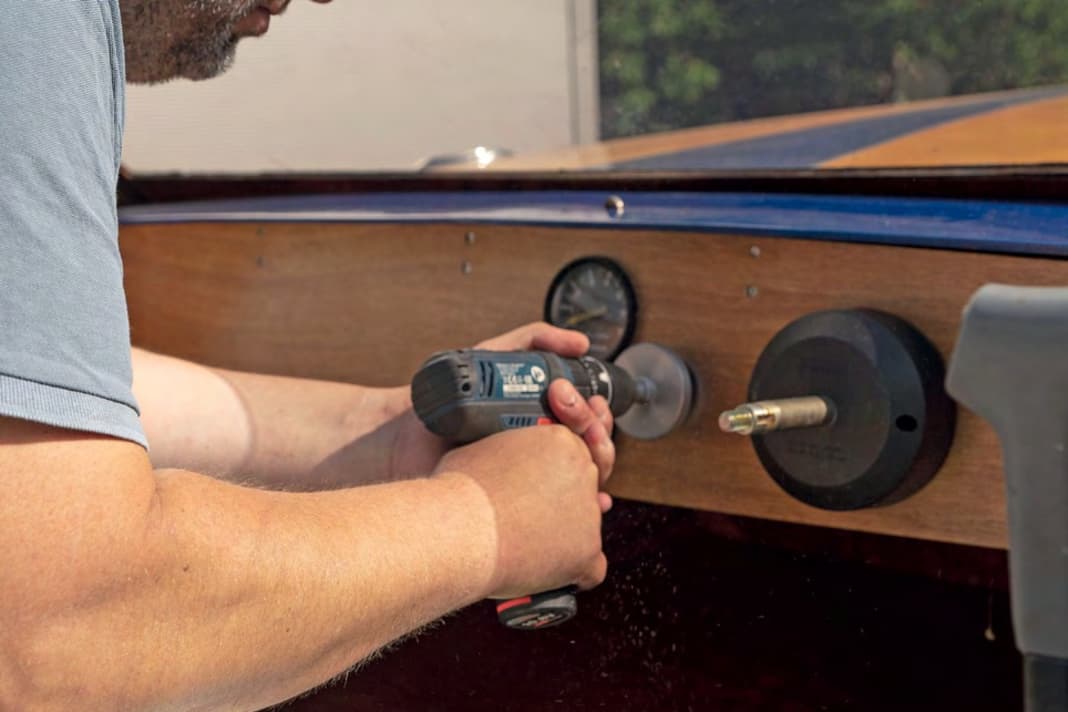





Safety is the top priority on board. This includes a lifejacket for each crew member as well as safety equipment with a complete bilge system and fire extinguisher or general safety of movement. The latter includes a sufficient number of handrails, railings and, of course, non-slip floor structures. Nevertheless, you are not always safe from going overboard. For example, if you are working on the foredeck in heavy seas or lose your balance due to a clumsy manoeuvre by the skipper and fall into the water, you will definitely be pleased when an alarm goes off or the engine even stops on its own.
Such an emergency stop device makes even more sense if the driver is alone on board and is "thrown off". Of course, there is a quick-stop line at the driver's seat to protect the driver. But it's easy to forget to attach the line properly, or the skipper moves away from the driver's seat because he wants to quickly haul in a fender or help his mate with the fishing equipment, for example. Situations in which the quick stop does not work.
The MOB+ system from Fell Marine is designed precisely for such events and also to protect the rest of the crew (especially children). To protect yourself and your crew, all you have to do is wear the small alarm chip called xFOB close to your body. This can be on a bracelet like a watch, on a lanyard around the neck or on a clip attached to clothing or a lifejacket. Even the dog can wear the xFOB on its collar and is thus also under the protective umbrella of the system. There are two types of alarm. The skipper is always equipped with the emergency stop variant, the additional (maximum three) xFOBs of the crew can be programmed to the alarm or emergency stop function.
How does the man-overboard system work?
It consists of a control unit that works with an antenna, the so-called xHUB, and the aforementioned xFOBs. When you come on board your boat, the skipper simply presses his xFOB and the xHUB prioritises him as the driver. This means that if he goes overboard, the engine is also stopped. All other people on board also log in by pressing a button on their xFOB and are automatically secured with the alarm function, which in turn means that a loud alarm sounds on the control panel if a person or the dog equipped with an xFOB goes overboard. This alarm can then be switched off by the driver. However, as already mentioned, the emergency stop function can also be activated for the other alarm chips.
If you want to stop the engine normally, you only need to press "Stop" on an xFOB.
According to the manufacturer, communication between the control unit and xFOB takes place via a high-speed connection with a highly developed marine security protocol. If this radio link is interrupted, either by the distance between the alarm chip and xHUB in the air (around 15 metres) or by the water barrier (around 5 cm submerged), the alarm is triggered or the engine stops. And now? After six seconds, the engine lock is deactivated and the engine can simply be restarted with the switch lever in "Neutral" and the person who has gone overboard can be picked up. If the skipper is travelling alone, he must of course "catch" his boat again himself and can then hopefully climb on board independently using an easily accessible bathing ladder.
Installation of the man-overboard system






Now to the installation: This requires knowledge of electronics, as Fell Marine supplies the corresponding wiring diagrams for every engine manufacturer (in our case Honda). If you are not sure, it is best to have the system installed by a specialist workshop, which we recommend in any case during the engine warranty period. We installed our system together with a technician from Ferropilot (responsible for the distribution of MOB+ in Germany). First of all, we had to find the right place for the xHUB on the dashboard. Attention: The antenna must also have space behind the device. We installed it between the steering wheel and the rev counter. The steering wheel was removed beforehand so that we could work with the hole saw.
The next step was to unscrew and open the single-lever gearstick. This is the trickiest part for me, because you have to find the connection points, connect the additional cable properly and lay everything together neatly in the switch box without kinking or even crushing a cable. The additional cable must also be routed out of the box in a professional manner (not over sharp edges etc.). The xHUB then needs its own power supply, which should be protected by a 1 A to 3 A fuse. This is done using a two-core hose sheath cable to the fuse box under the rear box directly next to the battery.
Once everything is firmly screwed and clamped in place, we put the steering wheel back on and off we go for our test drive. In no time at all, the boat is slipped in and moored to the jetty. Next, the experts from Ferropilot arrive, get everything up and running and test the system. Then they head out onto the Dove-Elbe, and a young man volunteers as a test subject and simulates going overboard. Lo and behold, the engine stops shortly after our test subject lands in the water. We set the single-lever switch to "neutral" and after a few seconds the engine starts again without any problems.
What does such a system cost?
The price for the basic package (see picture in the gallery above) is 229.99 euros. Each additional xFOB costs 49.99 euros, the matching wristbands 24.99 euros each and the clip together with the lanyard 29.99 euros. The battery of the alarm chips must be replaced after a good 300 hours (the chip reports in good time). Distribution: www.ferropilot.de

